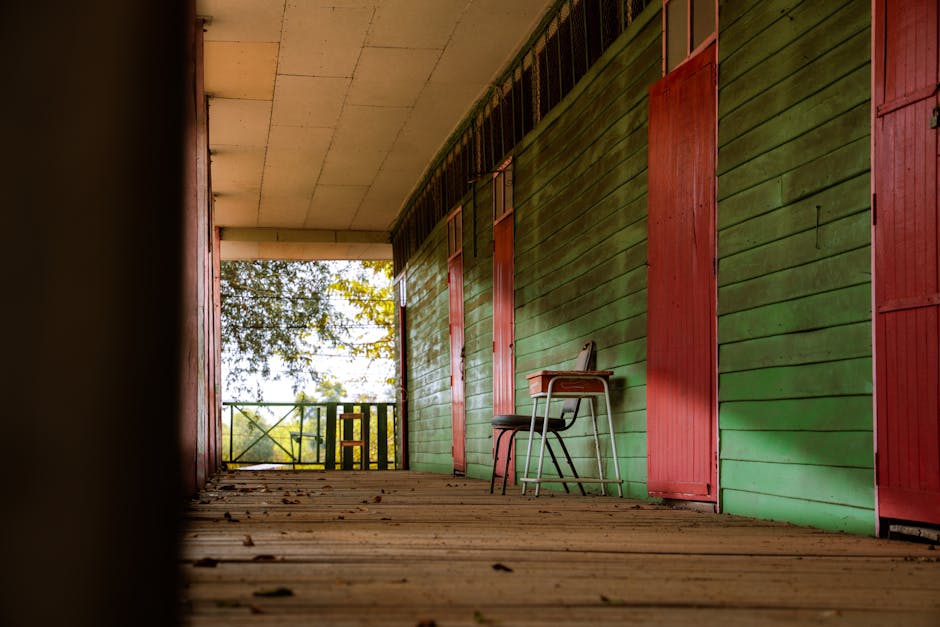A Quiet Place: Exploring the Sounds of Silence and the Power of Fear in Horror Cinema
John Krasinski’s 2018 film, A Quiet Place, wasn’t just another horror movie; it was a masterclass in suspense, built on the unsettling premise of a world overrun by creatures with hypersensitive hearing. The film’s success wasn’t solely dependent on jump scares, but rather on the masterful use of sound design, silence, and the inherent terror of a world stripped of its auditory comfort.
The Power of Silence: A Weapon of Terror
In a world where sound equates to death, silence becomes the ultimate weapon, a constant source of tension and anxiety. Krasinski masterfully uses this concept, creating a palpable sense of dread even in the quietest moments. The film’s score is minimal, punctuated by moments of unnerving quiet, forcing the audience to become acutely aware of every creak, rustle, or heartbeat. This heightened awareness turns everyday sounds into potential threats, amplifying the terror and making even the smallest noises unbearable.
The film cleverly manipulates the audience’s expectation of sound. We’re accustomed to using sound to anticipate danger, but in A Quiet Place, the absence of sound becomes just as threatening. The audience is constantly on edge, anticipating the inevitable, creating a level of suspense rarely seen in modern horror.
The Sensory Deprivation of a Silent World
The film’s effectiveness also lies in its portrayal of sensory deprivation. The constant need for silence forces the characters, and by extension the audience, to rely heavily on their other senses – sight, touch, and even smell. This heightened awareness of the environment adds another layer of anxiety. A simple glance can reveal a hidden danger, while the touch of a hand can communicate fear or comfort in a world where words are dangerous.

This sensory deprivation also allows the audience to empathize with the characters. We understand their struggles, their fears, and their constant battle for survival in this unique and terrifying world. The film’s quiet moments are filled with unspoken anxieties and emotions that are vividly communicated through the actors’ performances.
Beyond the Sounds: Thematic Depth in A Quiet Place
While the sound design is a crucial element, A Quiet Place transcends simple horror tropes by exploring deeper themes. The film touches on themes of family, survival, sacrifice, and the resilience of the human spirit in the face of unimaginable adversity.

Family Bonds Under Pressure
The film centers around the Abbott family, highlighting their unwavering bond in the face of constant threat. Their communication, adaptation, and survival strategies are shaped by their deep-seated love and loyalty. The film showcases how even in the most extreme circumstances, family can be a source of strength and hope.
The Price of Survival
The film doesn’t shy away from depicting the harsh realities of survival. Characters make difficult choices, often sacrificing their own well-being for the sake of their family. These sacrifices underscore the immense pressure and emotional toll of their constant fight for existence. The film doesn’t offer easy answers or happy endings, mirroring the challenges faced in real-life survival situations.
The Power of Adaptability
The Abbott family’s survival hinges on their ability to adapt to their environment. They develop unique communication strategies, create innovative tools, and constantly learn from their mistakes. This constant adaptation showcases the human capacity to overcome adversity through creativity, resourcefulness, and perseverance. The film serves as a powerful illustration of resilience in the face of seemingly insurmountable odds.
The Legacy of A Quiet Place: Sequels and Impact
The success of A Quiet Place led to a sequel, A Quiet Place Part II, which further explored the world and its creatures. The sequels expanded on the themes of the original film while introducing new characters and challenges. The franchise’s continued success speaks to its enduring appeal and the effectiveness of its unique approach to horror.
Beyond its box office success, A Quiet Place has also had a significant impact on the horror genre. It demonstrated the power of sound design and silence in creating suspense and terror, influencing other films and inspiring filmmakers to explore innovative ways to scare their audiences. The film’s unique premise and themes continue to resonate with audiences, cementing its place as a landmark film in the modern horror landscape.

Analyzing the Sound Design: A Deeper Dive
The film’s sound design is meticulously crafted, using both silence and strategically placed sounds to build tension and enhance the narrative. The use of diegetic sound – sounds that originate within the film’s world – is particularly effective. The audience hears the sounds that the characters hear, creating a shared experience of vulnerability and fear.
- The use of silence: Extended periods of silence create anticipation and heighten the audience’s awareness of potential dangers.
- Footsteps and other subtle sounds: These sounds are amplified, emphasizing the constant threat and the characters’ need for caution.
- The creatures’ sounds: These are sparingly used, yet incredibly effective in creating a sense of dread and impending doom.
- Music: The film’s score is minimal but impactful, building tension without relying on loud or jarring sounds.
The masterful interplay of sound and silence in A Quiet Place creates a unique and terrifying cinematic experience. The film’s lasting impact is a testament to the power of creative sound design and its ability to elevate a horror film beyond simple jump scares.
Conclusion: A Quiet Place’s Enduring Power
A Quiet Place is more than just a horror film; it’s a testament to the power of silence, the strength of family, and the human capacity for resilience. Its masterful use of sound design, coupled with its exploration of profound themes, ensures its place as a modern horror classic. The film’s enduring legacy lies not just in its box-office success but in its ability to leave a lasting impression on audiences, long after the credits roll.
The film’s success highlights the potential of the horror genre to explore deeper themes beyond simple scares. By using silence as a weapon and focusing on the emotional core of its story, A Quiet Place created a truly unforgettable cinematic experience.

